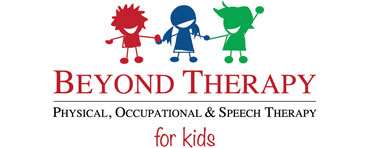A study by McHale and Cermak discovered school-aged children spend 30-60% of their school day performing handwriting or fine motor tasks, and 10-25% of all school-aged children struggle with handwriting (Graham, Harris, and Larson, 2021). Handwriting has many different components, such as hand strength, visual-spatial skills, motor control, visual perception, executive functioning, and much more. These components must work together to result in handwriting with ease and legibility, but with 10-25% of school-aged children struggling with handwriting, parents, teachers, and therapists must learn ways to ease the handwriting load placed on our children to generate success.
What is dysgraphia?
Dysgraphia is a learning disability resulting from a “neurological disorder in which a person experiences writing difficulties” (Sutherland, 2012). Dysgraphia affects not only expressive written language but also how easily children acquire written language; this is the result of impaired orthographic coding. Orthographic coding is the ability to store written words in working memory while the letters in the word are analyzed.
There are 3 types of dysgraphia: dyslexia dysgraphia, motor dysgraphia, and spatial dysgraphia. Children with dyslexia dysgraphia often have difficulties with legibility, spelling, and punctuation from dictation but do well when copying written words. Children with motor dysgraphia often have difficulties with illegible handwriting due to motor control and decreased muscle strength; however, often have few spelling and punctuation errors. Children with spatial dysgraphia often write letters that deviate from the line above or below; the letters can be written on top of each other or very far apart.
Red flags to look for if you’re concerned about dysgraphia:
- Cramped fingers on pencil/crayon, resulting in hand fatigue
- Mixture of upper and lowercase letters
- Inconsistent letter formation and letters with a slant
- Irregular sizes and shapes
- Misuse of margins and lines and poor organization on the paper
- Decreased speed in copying and writing
- General illegibility
- Frequent need for verbal cues or use of subvocalizations
- Heavy reliance on vision to monitor what the hand is doing during writing
Practical ways to help create success for children with dysgraphia across all environments:
- Pencil grippers, slant boards (large 3 ring binder suffice), adapted handwriting paper, highlighted lines/boundaries, graph paper for math
- Ball chairs, air filled cushions, ensure proper body positioning
- Allow for extra time, alternate test/assignment formats to fill in the blanks, provide word banks or memory aids, allow for verbal answering,
- Word processor, specialized software
Key reminders for children with dysgraphia, handwriting does not reflect their knowledge or cognitive ability. Written reversals are typical through first grade and the ability to distinguish between L/R (laterality) is developed at 6-7years of age. By implementation of previously mentioned compensatory strategies, we can aid those who have difficulty and expand on their strengths.
Click here to find a pediatric occupational therapist near you.
Katy Hendry, MOTR/L received her Masters of Occupational Therapy from Brenau University in Gainesville, Georgia. Katy enjoys treating kids with varying diagnoses and working with their parents on how to best support their children in daily life. Katy is a native of Livingston, AL where she currently resides with her husband and two dogs.
